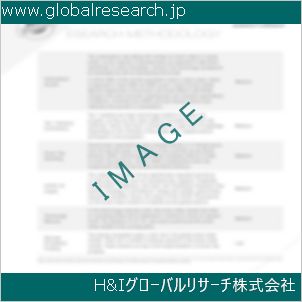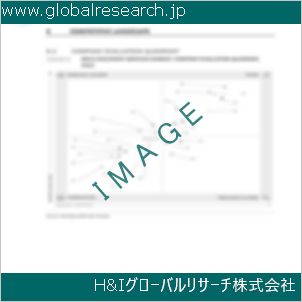Table of Contents
1 Industry Overview of Berylliumchloride
1.1 Definition and Specifications of Berylliumchloride
1.1.1 Definition of Berylliumchloride
1.1.2 Specifications of Berylliumchloride
1.2 Classification of Berylliumchloride
1.3 Applications of Berylliumchloride
1.3.1 Nuclear Application
1.3.2 Non-Nuclear Application
1.4 Industry Chain Structure of Berylliumchloride
1.5 Industry Overview and Major Regions Status of Berylliumchloride
1.5.1 Industry Overview of Berylliumchloride
1.5.2 Global Major Regions Status of Berylliumchloride
1.6 Industry Policy Analysis of Berylliumchloride
1.7 Industry News Analysis of Berylliumchloride
2 Manufacturing Cost Structure Analysis of Berylliumchloride
2.1 Raw Material Suppliers and Price Analysis of Berylliumchloride
2.2 Equipment Suppliers and Price Analysis of Berylliumchloride
2.3 Labor Cost Analysis of Berylliumchloride
2.4 Other Costs Analysis of Berylliumchloride
2.5 Manufacturing Cost Structure Analysis of Berylliumchloride
2.6 Manufacturing Process Analysis of Berylliumchloride
3 Technical Data and Manufacturing Plants Analysis of Berylliumchloride
3.1 Capacity and Commercial Production Date of Global Berylliumchloride Major Manufacturers in 2023
3.2 Manufacturing Plants Distribution of Global Berylliumchloride Major Manufacturers in 2023
3.3 R&D Status and Technology Source of Global Berylliumchloride Major Manufacturers in 2023
3.4 Raw Materials Sources Analysis of Global Berylliumchloride Major Manufacturers in 2023
4 Capacity, Production and Revenue Analysis of Berylliumchloride by Regions, Types and Manufacturers
4.1 Global Capacity, Production and Revenue of Berylliumchloride by Regions 2019-2024
4.2 Global and Major Regions Capacity, Production, Revenue and Growth Rate of Berylliumchloride 2019-2024
4.3 Global Capacity, Production and Revenue of Berylliumchloride by Types 2019-2024
4.4 Global Capacity, Production and Revenue of Berylliumchloride by Manufacturers 2019-2024
5 Price, Cost, Gross and Gross Margin Analysis of Berylliumchloride by Regions, Types and Manufacturers
5.1 Price, Cost, Gross and Gross Margin Analysis of Berylliumchloride by Regions 2019-2024
5.2 Price, Cost, Gross and Gross Margin Analysis of Berylliumchloride by Types 2019-2024
5.3 Price, Cost, Gross and Gross Margin Analysis of Berylliumchloride by Manufacturers 2019-2024
6 Consumption Volume, Consumption Value and Sale Price Analysis of Berylliumchloride by Regions, Types and Applications
6.1 Global Consumption Volume and Consumption Value of Berylliumchloride by Regions 2019-2024
6.2 Global and Major Regions Consumption Volume, Consumption Value and Growth Rate of Berylliumchloride 2019-2024
6.3 Global Consumption Volume and Consumption Value of Berylliumchloride by Types 2019-2024
6.4 Global Consumption Volume and Consumption Value of Berylliumchloride by Applications 2019-2024
6.5 Sale Price of Berylliumchloride by Regions 2019-2024
6.6 Sale Price of Berylliumchloride by Types 2019-2024
6.7 Sale Price of Berylliumchloride by Applications 2019-2024
6.8 Market Share Analysis of Berylliumchloride by Different Sale Price Levels
7 Supply, Import, Export and Consumption Analysis of Berylliumchloride
7.1 Supply, Consumption and Gap of Berylliumchloride 2019-2024
7.2 Global Capacity, Production, Price, Cost, Revenue, Supply, Import, Export and Consumption of Berylliumchloride 2019-2024
7.3 USA Capacity, Production, Price, Cost, Revenue, Supply, Import, Export and Consumption of Berylliumchloride 2019-2024
7.4 EU Capacity, Production, Price, Cost, Revenue, Supply, Import, Export and Consumption of Berylliumchloride 2019-2024
7.5 China Capacity, Production, Price, Cost, Revenue, Supply, Import, Export and Consumption of Berylliumchloride 2019-2024
7.6 Japan Capacity, Production, Price, Cost, Revenue, Supply, Import, Export and Consumption of Berylliumchloride 2019-2024
8 Major Manufacturers Analysis of Berylliumchloride
8.1 Manufacturer One
8.1.1 Company Profile
8.1.2 Product Picture and Specifications
8.1.2.1 Type I
8.1.2.2 Type II
8.1.2.3 Type III
8.1.3 Capacity, Production, Price, Cost, Gross and Revenue
8.1.4 Contact Information
8.2 Manufacturer Two
8.2.1 Company Profile
8.2.2 Product Picture and Specifications
8.2.2.1 Type I
8.2.2.2 Type II
8.2.2.3 Type III
8.2.3 Capacity, Production, Price, Cost, Gross and Revenue
8.2.4 Contact Information
8.3 Manufacturer Three
8.3.1 Company Profile
8.3.2 Product Picture and Specifications
8.3.2.1 Type I
8.3.2.2 Type II
8.3.2.3 Type III
8.3.3 Capacity, Production, Price, Cost, Gross and Revenue
8.3.4 Contact Information
8.4 Manufacturer Four
8.4.1 Company Profile
8.4.2 Product Picture and Specifications
8.4.2.1 Type I
8.4.2.2 Type II
8.4.2.3 Type III
8.4.3 Capacity, Production, Price, Cost, Gross and Revenue
8.4.4 Contact Information
8.5 Manufacturer Five
8.5.1 Company Profile
8.5.2 Product Picture and Specifications
8.5.2.1 Type I
8.5.2.2 Type II
8.5.2.3 Type III
8.5.3 Capacity, Production, Price, Cost, Gross and Revenue
8.5.4 Contact Information
…
9 Marketing Trader or Distributor Analysis of Berylliumchloride
9.1 Marketing Channels Status of Berylliumchloride
9.2 Traders or Distributors with Contact Information of Berylliumchloride by Regions
9.3 Ex-work Price, Channel Price and End Buyer Price Analysis of Berylliumchloride
9.4 Regional Import, Export and Trade Analysis of Berylliumchloride
10 Industry Chain Analysis of Berylliumchloride
10.1 Upstream Major Raw Materials Suppliers Analysis of Berylliumchloride
10.1.1 Major Raw Materials Suppliers with Contact Information Analysis of Berylliumchloride
10.1.2 Major Raw Materials Suppliers with Supply Volume Analysis of Berylliumchloride by Regions
10.2 Upstream Major Equipment Suppliers Analysis of Berylliumchloride
10.2.1 Major Equipment Suppliers with Contact Information Analysis of Berylliumchloride
10.2.2 Major Equipment Suppliers with Product Pictures Analysis of Berylliumchloride by Regions
10.3 Downstream Major Consumers Analysis of Berylliumchloride
10.3.1 Major Consumers with Contact Information Analysis of Berylliumchloride
10.3.2 Major Consumers with Consumption Volume Analysis of Berylliumchloride by Regions
10.4 Supply Chain Relationship Analysis of Berylliumchloride
11 Development Trend of Analysis of Berylliumchloride
11.1 Capacity, Production and Revenue Forecast of Berylliumchloride by Regions and Types
11.1.1 Global Capacity, Production and Revenue of Berylliumchloride by Regions 2024-2029
11.1.2 Global and Major Regions Capacity, Production, Revenue and Growth Rate of Berylliumchloride 2024-2029
11.1.3 Global Capacity, Production and Revenue of Berylliumchloride by Types 2024-2029
11.2 Consumption Volume and Consumption Value Forecast of Berylliumchloride by Regions, Types and Applications
11.2.1 Global Consumption Volume and Consumption Value of Berylliumchloride by Regions 2024-2029
11.2.2 Global and Major Regions Consumption Volume, Consumption Value and Growth Rate of Berylliumchloride 2024-2029
11.2.3 Global Consumption Volume and Consumption Value of Berylliumchloride by Types 2024-2029
11.2.4 Global Consumption Volume and Consumption Value of Berylliumchloride by Applications 2024-2029
11.3 Supply, Import, Export and Consumption Forecast of Berylliumchloride
11.3.1 Supply, Consumption and Gap of Berylliumchloride 2024-2029
11.3.2 Global Capacity, Production, Price, Cost, Revenue, Supply, Import, Export and Consumption of Berylliumchloride 2024-2029
11.3.3 USA Capacity, Production, Price, Cost, Revenue, Supply, Import, Export and Consumption of Berylliumchloride 2024-2029
11.3.4 EU Capacity, Production, Price, Cost, Revenue, Supply, Import, Export and Consumption of Berylliumchloride 2024-2029
11.3.5 China Capacity, Production, Price, Cost, Revenue, Supply, Import, Export and Consumption of Berylliumchloride 2024-2029
11.3.6 Japan Capacity, Production, Price, Cost, Revenue, Supply, Import, Export and Consumption of Berylliumchloride 2024-2029
12 New Project Investment Feasibility Analysis of Berylliumchloride
12.1 New Project SWOT Analysis of Berylliumchloride
12.2 New Project Investment Feasibility Analysis of Berylliumchloride
13 Conclusion of the Global Berylliumchloride (CAS 7787-47-5) Industry 2024 Market Research Report
| ※参考情報 塩化ベリリウムは、化学式 BeCl₂ で表される無機化合物であり、ベリリウムと塩素から構成されています。この化合物は、水溶性であり、特に熱や湿気に敏感な特性を持っています。ベリリウムは、軽金属の一種で、非常に高い融点を有し、耐腐食性に優れた材料です。塩化ベリリウムは、常温では無色の結晶または白色の粉末として存在し、結晶構造においては高い対称性を持っています。 この化合物の特徴としては、まずその反応性の高さが挙げられます。塩化ベリリウムは水と反応し、ベリリウム水酸化物と塩酸を生成します。さらに、強い吸湿性を持つため、湿度の高い環境では容易に水分を吸収し、加水分解を起こしやすいという特性を持っています。また、塩化ベリリウムは、加熱することにより分解し、塩素ガスとベリリウムを放出します。 塩化ベリリウムにはいくつかの異なる種類がありますが、主に無水塩化ベリリウムと水和塩の形態が存在します。無水塩化ベリリウムは主に工業的に使用される形態であり、水和塩は水分を含んだ形態です。水和塩は、その水分含有量に応じて、異なる化学式(例えば BeCl₂·xH₂O)で表されることがあります。 塩化ベリリウムの主な用途は、化学産業において非常に多岐にわたります。例えば、塩化ベリリウムは、有機合成反応における触媒として広く使用されます。特に、グリニャール反応やアルキル化反応において、その触媒作用が発揮されます。また、塩化ベリリウムは、合金の製造や金属の処理においても利用されています。ベリリウム自体が非常に軽量でありながら強度が高いため、航空機や宇宙産業においても重要な役割を果たしています。 さらに、塩化ベリリウムは、放射線シールド材料としての用途もあります。ベリリウムは中性子を効率よく吸収する特性を有しており、そのため放射線防護材としての利用が期待されています。これにより、医療や原子力に関連する分野において、塩化ベリリウムの利用価値が高まっています。 塩化ベリリウムに関連する技術も進歩しており、特にナノテクノロジーや材料科学において新たな応用が模索されています。ナノ粒子としての塩化ベリリウムは、電子デバイスやセンサー、光学材料などの分野での利用が研究されています。これにより、塩化ベリリウムの特性を最大限に活かした新しい材料の開発が進められています。 しかし、塩化ベリリウムは毒性が高い物質でもあり、取り扱いや廃棄時には注意が必要です。ベリリウム化合物は、吸引したり皮膚に触れたりすることで、肺や皮膚に悪影響を及ぼす可能性があります。そのため、工業においては適切な安全対策を講じることが重要です。 このように、塩化ベリリウムは、その化学的特性や様々な用途により、多くの産業で重要視されています。今後も新たな技術の発展とともに、塩化ベリリウムの利用は広がっていくと考えられます。その際には、安全性の確保が重要であり、環境への影響を考慮した取り組みが求められるでしょう。 |
❖ 免責事項 ❖
http://www.globalresearch.jp/disclaimer












